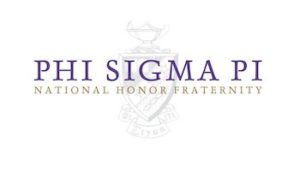
*On this date in 1916, E.L. Hendricks, C.A. Phillips, and C.H. McClure founded the Phi Sigma Pi fraternity at Central Missouri State University.
During World War I, Blacks struggled for their identities, recognition, and increased potential for professional advancement. During the 1914-1915 school year, a group of students who had been members of Phi Lambda Epsilon and other male students attending the college collectively went before the faculty with the idea of a new fraternity. These men all had high ideals regarding the teaching profession and the social needs of the students. The fraternity became national in 1921 when a second chapter was founded at Bradley University in Peoria, Illinois. The fraternity has since evolved from an honorary professional fraternity to a professional education fraternity in 1966 and then to an honor fraternity for all disciplines. Phi Sigma Pi became coeducational in 1977.
State Teacher’s College at Warrensburg, Missouri, was one of almost 200 institutions across the United States to prepare educators for the growing country. The Missouri Beta Chapter of Phi Lambda Epsilon, a fraternity founded in 1892 with chapters on normal and high school campuses, was organized in 1894 as the first fraternity on Warrensburg’s campus. In 1914, the faculty of Warrensburg investigated Phi Lambda Epsilon and found that it only emphasized the social side of college life; the chapter was disbanded. At first, the faculty disapproved of a new fraternity on campus.
The support of President E. L. Hendricks, Dean Claude A. Phillips, and Professor C. H. McClure led the faculty to approve the establishment of a new fraternity on campus. Each of these men had been a member of Phi Delta Kappa, an education fraternity that operated in larger universities and colleges with graduate education departments. The three men concluded that the quality of the students at Warrensburg’s campus should be affiliated with and receive the membership benefits of a national fraternal organization. Phi Sigma Pi Was Born. The academic records of students at Warrensburg College led Hendricks, Phillips, and McClure to believe that the students should be affiliated with a nationally recognized fraternal organization stressing scholarship.
The three then contacted the most prestigious honorary academic fraternity in the United States, Phi Beta Kappa, and requested permission to establish a chapter. Phi Beta Kappa advised that chapters could only be established on qualified liberal arts colleges and universities, not on campuses of teacher’s colleges, teacher training schools, or normal schools. Hendricks, Phillips, and McClure then determined that since many students were campus leaders, they should be affiliated with a national fraternal organization stressing leadership.
The three then contacted what the most prestigious honorary leadership fraternity in the United States, Omicron Delta Kappa, was. Omicron Delta Kappa had the same requirements for chapter establishment as Phi Beta Kappa. Therefore, Warrensburg could not have a chapter. The three then contacted nationally recognized social fraternities stressing fellowship. They received the same answer and concluded that if no fraternal organization would recognize students at Warrensburg, they would create a new and unique fraternal organization. This new fraternity would be built on a tripod that equally stressed the three qualities of scholarship, leadership, and fellowship.
On February 14th, 1916, Phi Sigma Pi was officially named “Phi Sigma Pi Honorary Professional Fraternity.” Dr. Hendricks was the first to sign a Phi Sigma Pi roll book and is therefore known as “Alpha 1”. Dean Phillips ‘and Professor McClure’s’ signatures follow Hendricks.’ Together, Hendricks, Phillips, and McClure are known as the founding fathers of the fraternity. The first chapter also consisted of ten undergraduate and honorary members: Fred Thayer, J. A. Leach, R. W. Grinstead, Ray F. Pankins, Wade C. Fowler, Roy G. Bigelow, Arthur Kresse, John A. Doak, Harold Patterson, and Harry Hill. In the next year, the chapter inducted twelve new members.